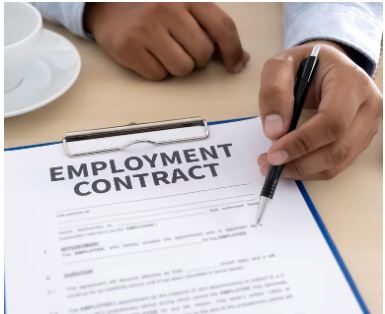Settled an Employment Case? Now Comes the Hard Part
In this article, Alice K. Jump and Ethan Krasnoo explore some of the issues raised by recent changes in employment law, as well as some specific requirements regarding waiting periods, tax implications, case dismissal requirements and enforceability under New York and federal law.
In a bygone era, parties could settle employment disputes by executing straightforward agreements and disbursing timely payment to the claimant. Now, however, legal developments, spurred in part by the #MeToo movement, have shifted the dynamic and made documenting the settlement of a dispute, particularly one involving claims of discrimination or harassment, much more complicated.
In this article, we explore some of the issues raised by recent changes in the law, as well as some specific requirements regarding waiting periods, tax implications, case dismissal requirements and enforceability under New York and federal law.
Non-Disclosure and Non-Disparagement Provisions
Though it has been standard practice for employers to demand both confidentiality and non-disparagement provisions in settlement agreements, these provisions are now being challenged by both state and federal authorities.
Notably, for disputes involving claims of harassment and discrimination, Section 5-336 of New York General Obligations Law (GOL) prohibits “any term or condition that would prevent the disclosure of the underlying facts and circumstances to the claim or action unless the condition of confidentiality is the complainant’s preference.” The preference has to be embodied in a specific written agreement signed by the complainant. Section 5-336 also requires that settlement agreements make clear that the employee has the right to testify in connection with a state, local or federal agency, or disclose any facts necessary to obtain unemployment insurance or other public benefits.
On the federal level, a February 2023 ruling by the National Labor Relations Board (NLRB) has called into question the validity of confidentiality and non-disparagement provisions as a whole for certain classes of employees.
In McLaren Macomb, 372 NLRB No. 58 (2023), the NLRB held that confidentiality and non-disparagement clauses in severance agreements for non-managerial employees violated Section 7 of the National Labor Relations Act (NLRA), which prevents employers from restricting employees’ right to discuss the terms and conditions of their employment. To date, there is much uncertainty as to the impact of the McLaren Macomb decision as courts have not yet ruled on its scope.
However, in Memorandum GC 23-05, the NLRB General Counsel provided some follow-up guidance indicating that non-disclosure language intended to guard proprietary information is allowed and that language prohibiting an employee from disclosing the financial terms of the settlement to anyone other than specific individuals would also generally be acceptable. The memorandum also states that language preventing statements that are maliciously untrue and made with knowledge or reckless disregard of their falsity may still be lawful.
Confidentiality and non-disparagement agreements usually contain some provision for obtaining injunctive relief as well as damages. In reality, obtaining an injunction or proving actual damages is an arduous and expensive process, so employers have often included liquidated damages clauses in the agreement which may include forfeiture of the settlement amount.
As of November 2023, however, such clauses for breach of confidentiality or non-disparagement provisions are no longer permitted in New York for the settlement of discrimination or harassment claims. In particular, GOL-5-536(3) provides that a release of claims that involve unlawful discrimination, including discriminatory harassment or retaliation, shall not be enforceable if, as part of the agreement, the complainant is required to pay liquidated damages or forfeit all or part of the consideration for the agreement for violation of non-disclosure or non-disparagement clauses.
The statute also prohibits agreements that contain or require any affirmative statement, assertion or disclaimer by the complainant that they were not subjected to unlawful discrimination.
Waiting and Revocation Periods
When enacted, Section 5-336 of the GOL required an unwaivable 21-day waiting period before an employee could sign a confidentiality preference agreement. Section 5-336 was amended by S4516 on Nov. 17, 2023, which removed the text requiring the 21-day consideration period. However, Section 5003-B of the New York State Civil Practice Law and Rules (CPLR) continues to require a 21-day consideration period for the confidential treatment of a settlement by an employer in discrimination cases. As a result, at least until any revisions are made, the provisions of Section 5003-B are applicable to any litigated employment discrimination matters that are subject to the CPLR (i.e., litigations pending in New York State court).
Conversely, pre-litigation matters, or those not subject to the CPLR, no longer mandate the 21-day waiting period for the preference agreements, though they continue to mandate the inclusion of confidentiality terms in a separate preference agreement.
Further, regardless of whether a 21-day waiting period applies, GOL §5-336(1)(b) and Section 5003-B of the CPLR both require a revocation period of at least seven days following the execution of the confidentiality preference agreement, during which time the employee may revoke the agreement. The confidentiality preference agreement thus does not become enforceable or effective until the seven-day revocation period expires. GOL §5-336(1)(b).
In settlements with employees aged 40 or older, any release must comply with the Age Discrimination in Employment Act, 29 U.S.C. §621 et. seq., as amended in 1990 by the Older Workers Benefit Protection Act, 29 U.S.C. §626(f)(1) (ADEA). The statute requires that the employee releasing such a claim must be given at least 21 days to consider signing the agreement, or 45 days if the waiver is offered in association with an exit incentive or other employment termination program offered to a group or class of employees. 29 U.S.C. §626(f)(1)(F). The statute further requires that the agreement must provide at least seven days for the relinquishing party to revoke the agreement. 29 U.S.C. §626(f)(1)(G).
While the employee does not have to wait the 21 days to execute the agreement, they must be afforded that length of time to consider it, and the agreement would not become effective (nor any payments be made) until the eighth day (i.e., the expiration of the revocation period) following the employee’s execution of the agreement.
Payment Structure
In some instances, the structure of any settlement amount may be as important as the amount itself and thus should be addressed earlier in the settlement process. In addition to deciding when the payment should be made and how, the agreement should detail how the payment will be dealt with for tax purposes and whether any portion will be paid directly to the employee’s attorneys for the legal services provided.
Traditionally, a W-2 employee would receive the settlement amount with W-2 deductions taken from the payment, but there may be situations that warrant payment of some or, in rare cases, all of the settlement amount without deductions as a 1099 payment. This could include situations where the complainant was an independent contractor employed through a non-party agency, or if some of the settlement is being paid to compensate the employee for alleged emotional distress and/or physical pain and suffering. Since different payment structures have different tax implications, attorneys and clients should seek tax advice early in the settlement process.
Should the underlying employment dispute involve discrimination or whistleblower claims, additional tax benefits should be considered by the employee who may receive a tax deduction for legal fees paid. Specifically, 26 U.S. Code §62(a)(20) provides that actions involving a claim of “unlawful discrimination” may result in such deductions, and §62(e) breaks out the definition of “unlawful discrimination” into 18 subsections which include broad claims that may not traditionally be thought of as discrimination, including whistleblower claims.
Case Dismissal Requirements and Timing
With one notable exception for wage and hour disputes under the Fair Labor Standards Act, employment disputes settled after commencing legal action in court typically do not require court approval of a settlement agreement before the case can be dismissed. Even if no approval is required, claimants normally do not want to dismiss the action until payment is made.
To address timing issues, a stipulation of dismissal executed by the employee’s counsel may be held in escrow by the employer’s counsel until payment has been received. The timeline for dismissal should be memorialized in the agreement and allow time for the settlement payment(s) to be cleared by the bank if made by check or ACH by, for example, mandating that a stipulation of dismissal be filed within three business days of “clearance” rather than “receipt” of the payment(s).
Conclusion
The intricacies of settling employment disputes, particularly discrimination and harassment claims, are complex and evolving. Parties should remain abreast of the changing legal landscapes and tailor their approach to ensure a mutually satisfactory resolution.
Reprinted with permission from the January 05, 2024 edition of the New York Law Journal © 2023 ALM Global Properties, LLC. All rights reserved.
Further duplication without permission is prohibited, contact 877-256-2472 or asset-and-logo-licensing@alm.com.
Please visit Alice K. Jump’s and Ethan Krasnoo’s attorney profiles to learn more about their practices.


